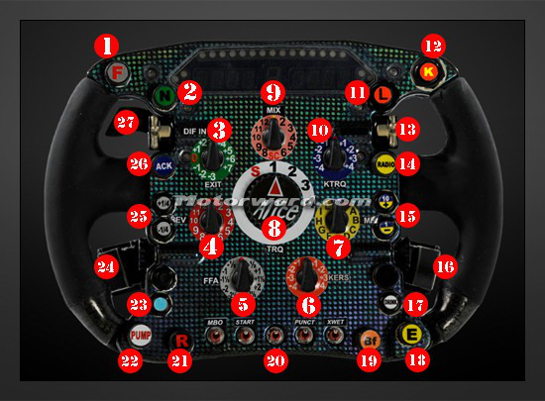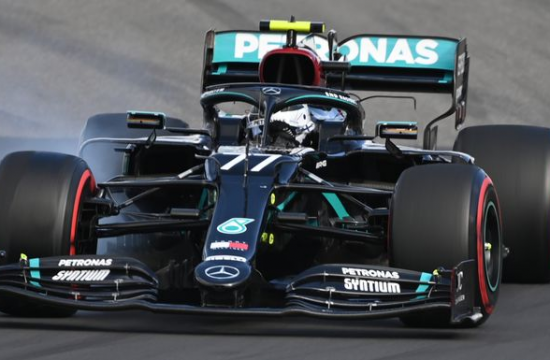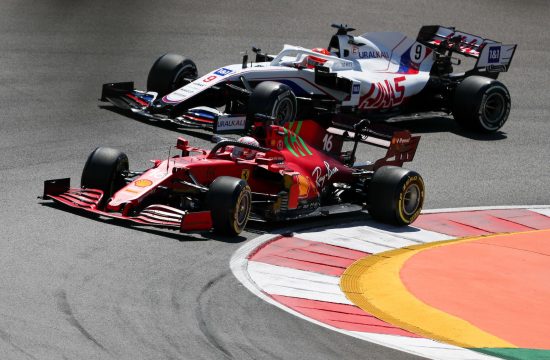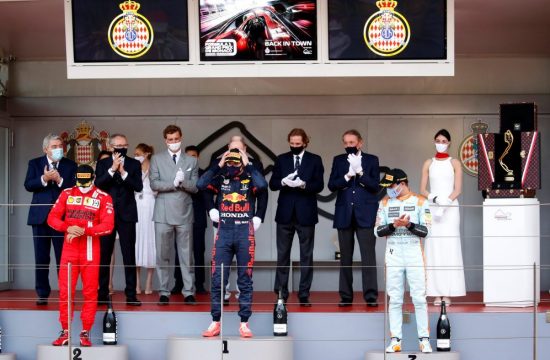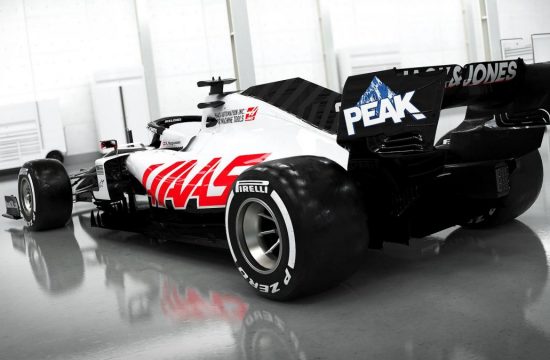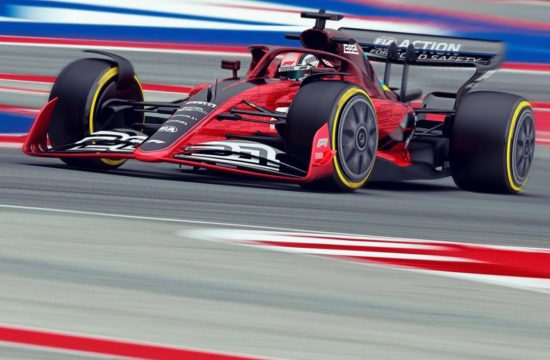During an F1 race you don’t get to see what’s going on inside the cockpit; however, you do often catch the esoteric radio messages between driver and team.
These messages usually pertain to the multitude of controls on the complex steering wheel. Not only do F1 drivers have to contend with extreme G-forces, but lap after lap they are constantly analysing how the car feels. The tyres start to wear, temperatures and pressures change, and as the fuel burns away, the car becomes lighter. All these factors play a significant role in how the car handles – this means the driver requires an extremely technological steering wheel (costing more than an actual supercar) that can deal with all eventualities.
In the above Infographic, you can see from the amount of controls as to how complicated machine an F1 car is. To give you an idea of what exactly goes on inside the cockpit, we’ve numbered all the controls available to the driver and what they do to enable any car adjustments without having to pit.
- Front wing flap activation
- To engage neutral
- Differential setting for exiting corners
- Engine Rev Limiter
- Course Front Flap Adjustment
- KERS (Kinetic Energy Recovery System) Discharge Unit
- Recovery Strategy Menu
- Engine Torque
- Fuel Mixture Selection
- Pre-selected Clutch Settings
- Pit lane Limiter (100kph)
- KERS activation
- KERS Charge Adjustment – Gears Down (located behind)
- Car To Pit Radio
- Recovery Strategy Scrolling
- Clutch Paddle
- Recovery Strategy Accept
- Engine Kill Switch
- Clutch Biting Point Selection
- Race phase Switches
- Reverse
- Oil Pump
- Drink Pump To Feed Driver
- Clutch Paddle
- Fine Front Flap Adjustment
- Menu Scroll
- Gears Up + just to the right: Corner Entry Differential Setting
So as you can see, the driver can make many mechanical adjustments whilst racing. Pit to car communications are vital in deciding strategy and how the tyres are performing, so the RADIO button is one of the important ones. The driver can even deploy a pump that feeds liquid through a pipe and into the driver’s helmet for re-hydration, extremely important in maintaining hydration and concentration in the stifling conditions.

